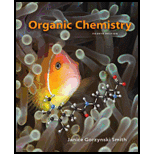
(a)
Interpretation: The product for the given reaction is to be drawn.
Concept introduction: The reaction of
The bromination at allylic carbon takes place via electrophilic addition. Electrophilic addition reactions are those in which breaking of pi bond take place to form new sigma bond.
(b)
Interpretation: The product for the given reaction is to be drawn.
Concept introduction: The reaction of alkene with
The bromination at allylic carbon takes place via electrophilic addition. Electrophilic addition reactions are those in which breaking of pi bond take place to form new sigma bond.
(c)
Interpretation: The product for the given reaction is to be drawn.
Concept introduction: Electrophilic addition reactions are those in which breaking of pi bond take place to form new sigma bond.
The addition of Halogens to alkenes is a stereospecific reaction. The resultant product is meso compound, if alkene is cis and addition of halogen is syn addition. If addition of halogen is anti, then the resultant products are racemic mixture. In case of trans alkene, the resultant product is meso, if addition of halogen is anti. The resultant products are racemic mixture, if the addition of halogen is syn.
Want to see the full answer?
Check out a sample textbook solution
Chapter 15 Solutions
Organic Chemistry
- what is the product of each reaction?arrow_forwardDraw the products and identify the type of reaction. What functional groups is in the starting material and which functional groups are in the final product.arrow_forwardfinish the reaction by filling in any starting materials, reagents, or products as needed.arrow_forward
- Draw the products formed in each reaction.arrow_forwardUsing the Functional Group and Reagent to Identity the Type of Reaction Draw the product of each reaction.arrow_forwardAddition of HCl to alkene X forms two alkyl halides Y and Z. Label Y and Z as a 1,2-addition product or a 1,4-addition productarrow_forward
- Finish the indicated reaction by filling in and starting materials, reagents or products as needed arrow_forwardFill in the missing starting materials, reagents, or major products of each reactionarrow_forwardDraw the missing starting material. Reagent 1 is benzene and AlCl3. Reagent B is Zn(Hg) and HCl.arrow_forward
 Organic Chemistry: A Guided InquiryChemistryISBN:9780618974122Author:Andrei StraumanisPublisher:Cengage Learning
Organic Chemistry: A Guided InquiryChemistryISBN:9780618974122Author:Andrei StraumanisPublisher:Cengage Learning
